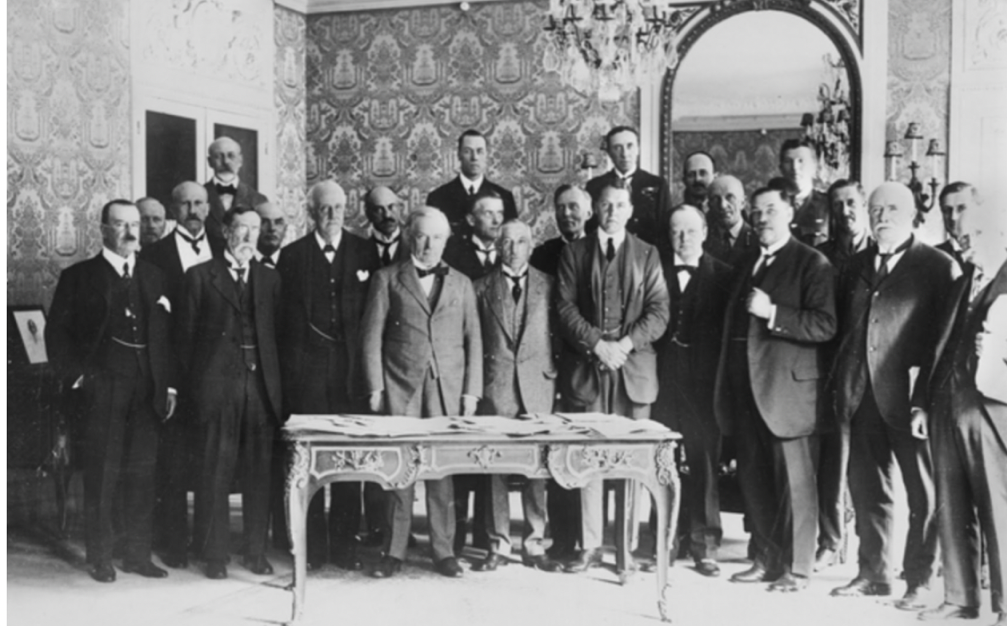If we date the modern Liberal Party from the 1859 meeting in Willis’ Tea Rooms, we must accord Palmerston the honour of being the first Liberal Prime Minister, though he would have thought himself the Queen’s minister and the nation’s leader rather than a party’s. In truth, he was more the last of the old regime rather than the first modern party leader, despite his early recognition of the need to have the media on side.
In his lengthy career of more than forty years in ministerial office, he was premier twice but probably better known for his involvement in foreign affairs and his time at the Foreign Office. His aggressive policy, much misunderstood at the time, was designed to preserve the balance of power in Europe and to reinforce the pre-eminence of Britain; to achieve peace through deterrence rather than provoke war. While he also adopted a forward policy towards British colonial possessions, it would be a mistake to see him as an imperialist in the modern sense of the word. He had less interest in domestic affairs, paying lip service to electoral reform, the major issue of the day, but avoiding practical action. While Palmerston never saw eye to eye with him, Gladstone was able to carry out major financial reforms as ‘Pam’s’ Chancellor of the Exchequer, including the 1860 Treaty with France, which cemented free trade as the British commercial system and probably did more than Palmerston’s military preparedness to stave off the war with France which was Palmerston’s major fear.
Henry John Temple was born in Park Street (now Queen Anne’s Gate), Westminster, on 20 October 1784, the son of Henry Temple, second Viscount Palmerston (an MP since 1762) and his second wife Mary Mee, the daughter of a wealthy Dublin merchant. In 1800 he went to Edinburgh University and between 1803 and 1806 attended St. John’s, Cambridge. He succeeded to his father’s Irish peerage in 1802, though this did not entitle him to a seat in the Lords. His political career began early, fighting the University of Cambridge seat unsuccessfully when he was twenty-one. In 1807 he was offered a junior Lordship of the Admiralty and had to be found a seat in the pocket borough of Newport, Isle of Wight. In 1809 he was moved to Secretary of War, a position he held for more than eighteen years until promised promotion in Canning’s short-lived government. As Secretary of War in a series of Tory governments, Pam proved his ability to run a department but until his association with Canning, appeared to take little interest in the wider aspects of government. During this early period of office, Palmerston led an active social life, earning himself the nickname Lord Cupid. He formed an intimate friendship with Lady Cowper (nee Emily Lamb) and married her in December 1839, some two years after the death of her first husband.
Following Canning’s death in 1827, Palmerston and his fellow Canningites joined Wellington, but only reluctantly in what they saw as an ultra-Tory government. The partnership did not last long and, when Palmerston made one of his first major speeches on foreign affairs attacking Wellington’s government, he was bidding for the Foreign Secretary’s post that he was granted by Grey in 1830. This first spell at the Foreign Office lasted with a short break until 1841 when Melbourne fell. The great success of the period was securing the existence of a Belgium independent from France and the Netherlands. Palmerston supported constitutionalists in Spain and Portugal, thwarting French territorial ambitions and alienating the autocratic powers, Austria, Russia and Prussia.
The fall of Melbourne brought Palmerston an unwelcome spell in opposition, fretting at the conciliatory approach of his successor, Lord Aberdeen. When Peel’s party fell apart over the repeal of the Corn Laws, Lord John Russell was forced to take Palmerston back in his former post despite his own and Queen Victoria’s reluctance to have such a forthright and independent-minded minister. This second spell at the Foreign Office covered the revolutions of 1848, and Palmerston favoured the liberal/nationalist line against the Queen’s support for the ancien rgimes. His willingness to use the navy to assert British predominance, as in the case of the 1850 dispute between Don Pacifico and the Greek government, infuriated the opposition and the ensuing debate allowed Palmerston the classic statement of his principles in his Civis Romanus sum speech. ‘Pam’ finally overstepped the mark when he recognised the new Bonapartist government in France in 1851 without Cabinet authorisation or the approval of the Queen. He was dismissed, but gained his revenge on the Prime Minister, Lord John Russell, a few days later by joining the opposition in defeating the government on a militia bill.
The succeeding, minority Tory government did not last long and was succeeded in turn by the first attempt at a Whig/Peelite/Radical coalition under Lord Aberdeen in December 1852. Palmerston accepted the post of Home Secretary, helping pass legislation controlling factory hours and abating pollution in London. He also ended the transportation of prisoners to Tasmania and arranged for young offenders to be sent to school rather than prison.
As Home Secretary he avoided the blame for the Crimean War when the revelations of military and civilian ineptitude in The Times brought about the downfall of Aberdeen at the beginning of 1855. His patriotism and rigour made him the inevitable choice as successor, and despite the desertion of the Peelites he formed his first administration, aged seventy-one – in time to take advantage of an improving military position in the Crimea, enabling him to conclude a successful peace in 1856. It did not take long for the usual pattern to reassert itself, however, and in March 1857 the government was defeated in the Commons on a motion condemning its provocative gunboat policy in China. However, Palmerston increased his support at the ensuing general election. Unusually he then went on to alienate his natural supporters. Firstly, the Indian Mutiny damaged confidence in the competence of the regime, and then Palmerston gave way to French demands for firm action against anti-Bonapartist terrorist groups said to be active in England, alienating the jingoists who supported him in the country and in Parliament. Derby formed another short-lived Tory government which, while gaining seats at the 1859 election, failed to achieve a majority and soon fell.
The era of unstable coalitions was coming to an end. In the course of 1859, the Whigs were able to patch up their quarrels and the Peelites decided which side of the fence to plant their feet. Support for the Italian nationalists in their struggle to cast off Austrian rule provided the key to a unity which, once achieved, sustained Liberal governments for most of the next quarter-century. Outmanoeuvring Russell, Palmerston resumed office in 1859 when the Tory government fell. He retained the premiership until his death, which occurred shortly after his third successive general election victory in 1865 – a rare tribute to his public popularity.
Domestically this was a quiet time; agitation for a second reform bill continued but Palmerston saw no need to bring it to a practical resolution. Gladstone strengthened free trade through the French treaty and continued his rationalisation of the tax system, abolishing the paper tax despite Palmerston’s opposition, but retrenchment in government expenditure proved impossible against Palmerstonian pressure to build up the armed forces.
As always, Palmerston’s chief preoccupation was with foreign affairs. In retrospect, the chief event of the time may be seen to be the American Civil War. Palmerston hated slavery and had ensured that the navy was used vigorously against the slave trade, but the government entertained some sympathies for the South and resisted the North’s attempts to constrain British trade. Despite the distress caused to the textile trade by the blockade on the South’s cotton exports, Palmerston kept Britain neutral.
In Europe he maintained his old habits – interfering to restrain the greater states to maintain the balance of power, encouraging the smaller and building British coastal and naval defences against the threat of the French. Although he was not wholly successful in these aims, as in the inability to keep Schleswig-Holstein in Danish hands against Bismarck’s Prussia, his policy retained public confidence.
Towards the end of his life Palmerston suffered from gout, but he finally caught a chill and died from the resulting fever at Brocket Hall, Hertfordshire, on 18 October 1865, aged eighty-one.
Palmerston’s personal papers are held in the Broadlands Archives Trust; the Hampshire Record Office and the British Library also hold records. Extracts of the correspondence with Queen Victoria have been published in B. Connell (ed.), Regina v Palmerston: The correspondence between Queen Victoria and her Foreign and Prime Minister, 1837-1865 (1962), with Gladstone in P. Guedalla (ed.), The Palmerston Papers: Correspondence of Lord Palmerston with Mr. Gladstone 1851-1865 (1928) and with Princess Lieven in Lord Sudley (ed.), Lieven-Palmerston Correspondence (1943). There are a wide range of biographies, of which the most accessible modern lives are J. Ridley, Lord Palmerston (1970), D. Southgate, The Most English Minister (1966), D. Judd, Palmerston (1975) and K. Bourne, Palmerston: The Early Years (1982). The Life of Henry John Temple, Viscount Palmerston (1870-76), Vols I-III by Rt. Hon. Sir H. L. Bulwer and Vols. IV-V by Rt. Hon. A. E. M. Ashley, is the official life.

Journal of Liberal History
For the discussion and research of Liberal, Liberal Democrat and SDP history
Developed and hosted by Prater Raines
